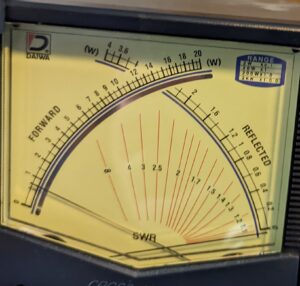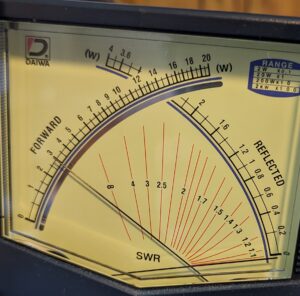Transmit audio in Flex 6600
As I wrote in my blog, the transmit audio in Flex 6600 is advertised as powerful because of a special technique called CEESB. In fact, it is very weak, comparable to FT450 or IC706. How weak? The average power when talking in a typical 100W radio is about 5-10W without speech processing and 30-40W with speech processing. In Flex these numbers are 1-2 W unprocessed and 5-10W processed. Not a big deal in regular QSOs but a big deal in DXing and contesting.
A few Flex users asked the Flex support for a fix. Instead of getting a fix, they were labeled as troublemakers. For entertainment, read discussions on TX audio on the Flex group.
Most contesters have left Flex long ago because the radio creates constant dramas. Still a few hang on because of Flex simplicity in remote setup. One of them Ron WV4P found that by using an external Behringer processor with a very high output, his signal got competitive.
Below is the average power of a 100W Flex 6600 when talking on an external SWR meter. Settings were maximum processing (DX+) and max MIC gain; lower mic gain lowers the signal without making signal quality better. The readings fluctuated as if there was little processing. 
Average power < 10W.
Tests with an external speech processor
The new setup uses an external speech processor TenTec 715.
 It implements speech processing by RF clipping. A SSB signal is created, amplified, clipped, filtered, and converted to an audio. This processor was a godsend for older rigs that did not have a quality speech processor. I used it for Elecraft KX3 that does not have a good processor, and the reports asked if I added an amplifier and changed to an expensive microphone.
It implements speech processing by RF clipping. A SSB signal is created, amplified, clipped, filtered, and converted to an audio. This processor was a godsend for older rigs that did not have a quality speech processor. I used it for Elecraft KX3 that does not have a good processor, and the reports asked if I added an amplifier and changed to an expensive microphone.
The audio setup in Flex 6600 was the same as before except that the equalizer was turned off. I listened to the signal on another radio and adjusted the controls in TT715 for a powerful yet pleasant signal. What about the average power?

About 30W and pretty steady. You can listen to a test with the Flex alone, with TT715, alone, and alone again.
Below is the waveform of the recording from Audacity. It contains 4 stages.

1. As original. Weak and getting weaker.
2. With TT715. Strong and even stronger after 0.5s
3. As orginal. Much stronger than 1.
4. Second original. Weak.
What do we make out of it? Clipping in Flex 6600 is weak. To make it stronger we need an external processor. Then, ALC (automatic line control) throttles the power too much, and a large signal is needed to overwhelm it. Its time constant is pretty long and lasts a few seconds.
With an external speech processor, Flex 6600 is passable as a SSB contest radio. I will keep it under a quality replacement is available.
Choices of external processors
It is possible that devices other than TT715 can also increase the average power. These could be audio mixers if they have a compression features, other speech processors like Drake SP75 or any from DF4ZS (SK but available second hand). A software version could be a Voice Shaper, or any other program that does the compression.
How to test your setup?
I recommend the following procedure to test an external processor.
- Attach an external analog power meter to the Flex.
- Listen to the signal on either another radio or on a second slice of 6600. The setup in receive should be such that the signal is above the noise but not much stronger.
- Do tests with the original setup. Look at the average power when talking. Adjust mic gain, PROC type and the equalizer for the best signal. Note the average power. If it is close to 10W, there is a room for improvement.
- Add the external unit and turn the equalizer off. Repeat tests as above. Declare a success if the average power is at least twice as high as without the external unit.
Please share your experiences with me.
Note that the equalization should be prior to processing. If there is no equalizer, the choice of the microphone is important.